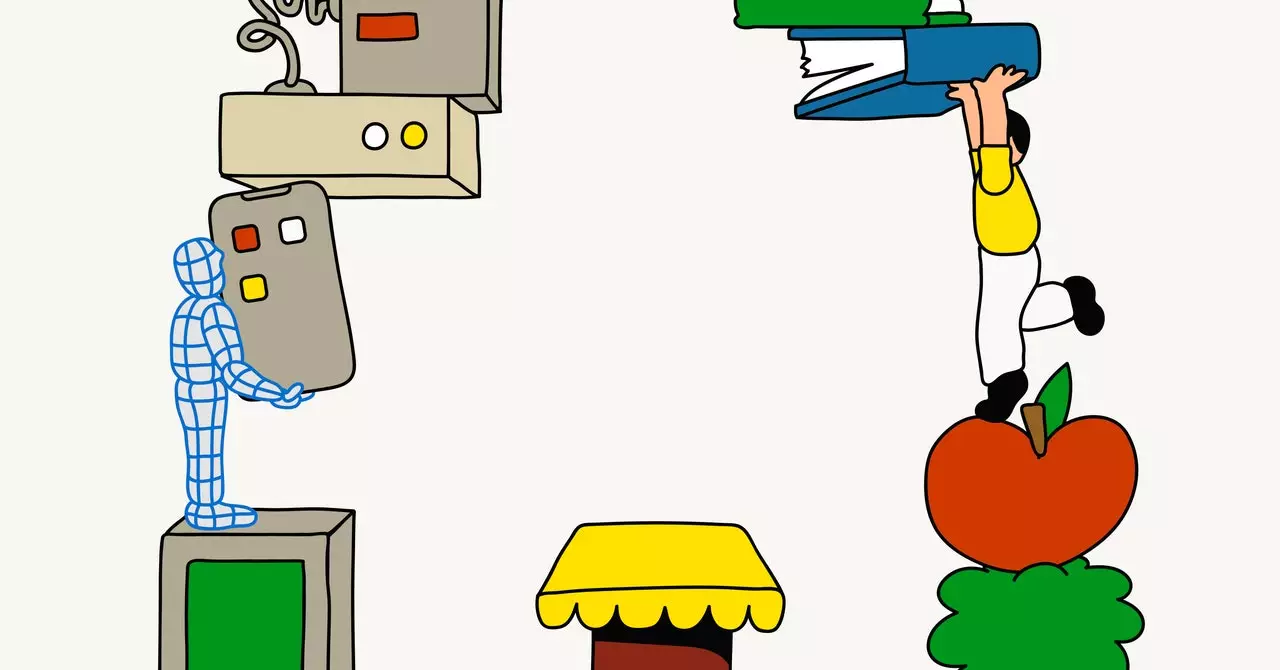Since the inception of organizational charts in the mid-19th century, the architecture of companies has remained relatively unchanged. Typically, companies have embraced a hierarchical structure laden with multiple tiers of management. This longstanding model has been primarily dictated by the limits of human cognitive capacity in processing and controlling workflow. However, the advent of artificial intelligence (AI) and, notably, large language models (LLMs) presents an opportunity to revolutionize workplace dynamics. As we approach the year 2025, an evolving partnership between humans and AI is set to redefine both organizational structures and operational strategies – transitioning from traditional frameworks to innovative collaborations.
The swift integration of AI into everyday life has garnered attention, particularly with the rapid adoption of AI assistants. Until now, AI has predominantly served as a mere assistant for individual tasks like writing, programming, and data analysis. Nonetheless, the horizon is brightening for businesses that recognize the shift to a new paradigm where AI’s role extends far beyond personal productivity. By 2025, it is anticipated that pioneering organizations will begin to architect their internal processes, culture, and overall design around the interplay between humans and AI. This transition signifies a profound departure from automation-centric thinking to a holistic approach that enhances human capabilities while leveraging AI’s unique strengths for a more agile and innovative workspace.
In envisioning the potential of organizational frameworks in 2025, it is crucial to recognize how LLMs could facilitate a cultural shift rather than merely replacing existing processes. Startups are already leading this transformation, adopting lean team structures of approximately 30 members and employing AI to manage scaling without the burdens of traditional overhead costs. This trend is not limited to startups; established corporations stand to gain significantly from reimagining their structures to incorporate AI actively. By circumventing inefficiencies, organizations can unlock latent growth capabilities within their existing talent pool, utilizing their workforce’s collective intelligence in unprecedented ways.
The coming year heralds a surge of “AI-native” startups, whose operational blueprints fundamentally revolve around effective collaboration with AI systems from inception. These organizations are characterized by finely-tuned human teams working alongside advanced AI resources, generating outputs that match or surpass those produced by larger, conventional entities. This model not only enhances productivity but also encourages a continuous feedback loop that can propel innovative thinking.
For larger firms, the path to integrating AI may prove to be intricate yet rewarding. The journey requires extensive research and development initiatives to identify how best to harness AI capabilities tailored to their specific organizational milieu. This process reveals a vital insight: AI operates more like a collaborator than like a standard software tool. Consequently, organizations may discover that their IT departments, while essential for implementation and maintenance, may not hold the keys to deriving innovation from AI usage.
Thus, the most compelling applications of AI will emerge from the collaborative efforts of employees across various departments. Their unique experiences and insights offer invaluable perspectives for determining effective use cases for AI, thereby democratizing AI application across the whole organization. Companies that harness this collective intelligence will be poised to lead the burgeoning AI transformation.
As organizations begin to integrate AI distinctly, the resultant structures will diverge dramatically from traditional hierarchies. Companies may witness the ascent of more fluid, project-oriented frameworks whereby teams form dynamically around specific objectives, with AI stepping in to facilitate connections and productivity. It is likely that the roles of middle management will evolve, shifting focus from conventional oversight to nurturing coordination between human resources and AI systems.
By 2025, the companies that not only utilize cutting-edge AI technologies but also effectively orchestrate human-AI collaboration will thrive. The true competitive edge will stem not merely from technological prowess but from the creative synthesis of human and artificial intelligence, fostering an environment ripe for innovation, efficiency, and unparalleled value creation.
The impending transition toward a collaborative ethos between humans and AI holds transformative implications for organizational design and functionality. This evolution, characterized by nimble frameworks and the convergence of unique capabilities, signals a radical departure from the rigid structures of the past. It invites a future where creativity and efficiency intertwine, offering an unprecedented opportunity for businesses to redefine success and stakeholder value in a rapidly evolving digital landscape. Embracing this partnership will not merely be an option; it will be imperative for survival and growth in an era driven by technology.

